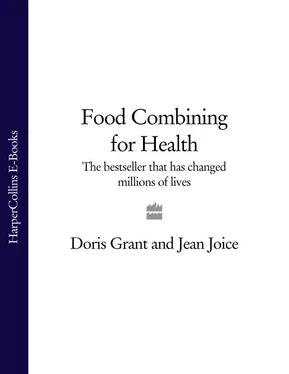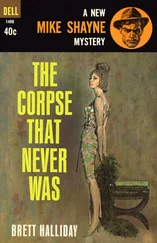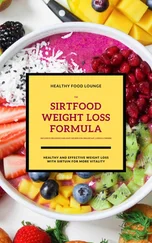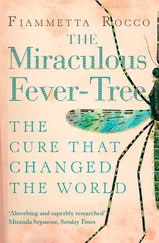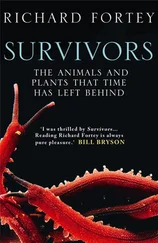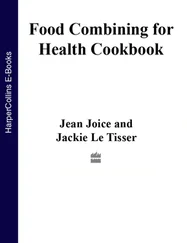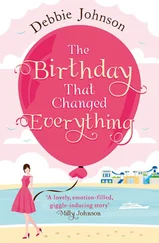DORIS GRANT AND JEAN JOICE
Food Combining for Health

Thorsons
An Imprint of HarperCollins Publishers Ltd.
1 London Bridge Street
London SE1 9GF
www.harpercollins.co.uk
First published October 1984
© Doris Grant and Jean Joice 1984, 1989, 1991, 2004
Foreword © John Mills 1984
Doris Grant and Jean Joice assert the moral right to be identified as the authors of this work
A catalogue record for this book is available from the British Library
All rights reserved under International and Pan-American Copyright Conventions. By payment of the required fees, you have been granted the nonexclusive, nontransferable right to access and read the text of this ebook on-screen. No part of this text may be reproduced, transmitted, downloaded, decompiled, reverse engineered, or stored in or introduced into any information storage and retrieval system, in any form or by any means, whether electronic or mechanical, now known or hereinafter invented, without the express written permission of HarperCollins ebooks
HarperCollins Publishers has made every reasonable effort to ensure that any picture content and written content in this ebook has been included or removed in accordance with the contractual and technological constraints in operation at the time of publication
Source ISBN: 9780722525067
Ebook Edition © OCTOBER 2012 ISBN 9780007373918
Version: 2016-10-04
Cover
Title Page
Copyright
Foreword
Introduction – A Personal Experience
An Appreciation – Doris Grant 1905–2003
Part One: The Theory and the Proof by Doris Grant
1 A Great Pioneer
2 The Hay System Explained
3 The Hay System and the Degenerative Diseases
4 Butter – Not Margarine
5 The Proof of the Pudding …
Part Two: The Hay System in Practice by Jean Joice
6 How to Begin
7 Menu Planning and Suggestions
Table of Compatible Foods
Part Three: Recipes for Protein Meals
8 Soups and Starters
9 Salads, Dressings and Sauces
10 Main Dishes
11 Vegetables
12 Desserts
Part Four: Recipes for Starch Meals
13 Soups
14 Salads
15 Main Dishes
16 Desserts
17 Bread
Appendix – Acid- and Alkali-forming Foods
Further Reading
Resources
Index
Recipe Index
Acknowledgements
About the Author
About the Publisher
ForewordBY SIR JOHN MILLS CBE
I am delighted to know that the Hay diet is being resuscitated after all these years. I have a copy of the original book, which my sister, Annette, gave me over 40 years ago, and on the flyleaf is written ‘John Mills’ Bible. Please do not remove’.
In 1942 I was invalided out of the Army with a man-size duodenal ulcer. In hospital I was fed on the usual ulcer-sufferer’s diet of rice puddings, mashed potatoes etc., and after three months there was no improvement. In fact, everything seized up and I became a walking zombie.
My sister, Annette, suggested to my wife, Mary, that she should put me on the Hay diet immediately. My first meal, which I remember with gratitude, was a thin minute steak, a large mixed salad and a small glass of claret. From that moment I have never looked back. After six weeks I was able to start work on a film.
Most diets, I find, are crashing bores, especially to hostesses, but if one follows the Hay diet it is possible to go to any dinner, public or private, and offend no one. All one has to remember is the principle of not mixing starch with protein. So one can wade one’s way happily through any festive occasion until it comes to the sweet course. I find the best way of coping with this is to leave the sweet untouched; the waiter will finally remove it, and nobody will have noticed.
I am sure that I could not, at my advanced age, cope with the work I have on hand at the moment if I were not a ‘believer’. I am playing eight shows a week in Little Lies at Wyndham’s Theatre, and the last act is a marathon. It is essential that I am really fit, and for this I rely practically entirely on the Hay diet. I am, incidentally, today wearing the jacket which I had made in 1938. It has not been let out, and I can still do the button up without any problem.
I wish the book every success, and I guarantee that anyone who follows the advice in it will derive the greatest of benefits from it.
Sir John Mills wrote this Foreword for the first edition of Food Combining for Health in 1984. Since then he has continued his film and theatrical career, and at 95 has a cameo role in Stephen Fry’s film Bright Young Things.
INTRODUCTION A Personal Experience
As we eat so are we; our health is made or marred with our feet under the dinner table.
Food Combining for Health was first published in October 1984. Three months later it became a runaway bestseller as grateful and enthusiastic readers spread the word among their relatives and friends. By January 1986 it was arousing such interest that the Cumberland Hotel in London opened a buffet serving delicious Hay system lunches. The book has also created great interest abroad and, apart from an American edition selling in the United States and Canada, it has been published in Dutch, Spanish, Portuguese, Italian, Hebrew, Greek, Serbo-Croat and Finnish.
This is a wonderful tribute to the efficacy of the Hay system, and its success is constantly confirmed by the countless letters Jean and I receive from converts. Many claim that it has changed their lives – in some cases miraculously. Knowing that the Hay system does not ‘cure’ but merely allows the body to heal itself, we are continually amazed at the extraordinary inbuilt healing powers of the body revealed in these letters, and the unbelievable speed with which they often work. Readers report agonizing arthritic pains removed within two weeks; allergies and psoriasis of long standing completely gone in four days; chronic migraine and hay fever banished in a matter of weeks; two pounds of excess weight shed in one week without counting calories or feeling hungry. Many more similar cases have been reported.
It was the efficacy and speed with which the Hay system resolved my own health problems that turned me into a lifelong follower. In my late 20s, severely painful rheumatoid trouble in my joints nearly crippled me and took all the fun out of life. When all the usual medical therapies had been applied with no effect whatsoever, a doctor-cousin came to the rescue with a very unorthodox prescription. It consisted of three columns of foods – proteins, starches and acid fruits – accompanied with the instruction: ‘Don’t mix foods that fight!’
By the end of just one week this unusual prescription, conscientiously carried out, produced a totally unexpected bonus: the complete termination of nagging indigestion pains which had plagued me for 15 years. After another week there were more unexpected results: an ability to think more clearly than formerly and a great general feeling of wellbeing which inspired me to carry on. By the end of four weeks all the rheumatoid pains had gone and have never returned.
After a year I felt like a new woman. I was tireless and filled with a new energy that I had never before experienced. The more difficult the task, the more I welcomed it as a challenge to my newly found health and abilities. Yet, apart from not eating meat or acid fruits (apples, oranges, pears, grapefruit, etc.) with bread or sugared foods at the same meal, there had been no other change in my diet. I knew nothing whatsoever about whole foods, and was still eating white bread and refined sugar, to whose potential dangers I had not been alerted. This fact is of the highest significance; it provided unique evidence that ‘not mixing foods that fight’ really works. It also demolishes the claim by sceptics that any benefit derived from the Hay system is entirely due to a changeover to whole-food eating. During the past 40 years I have received many letters from life-long ‘whole-fooders’ who had been unable to resolve their health problems until adopting the Hay lifestyle.
Читать дальше
